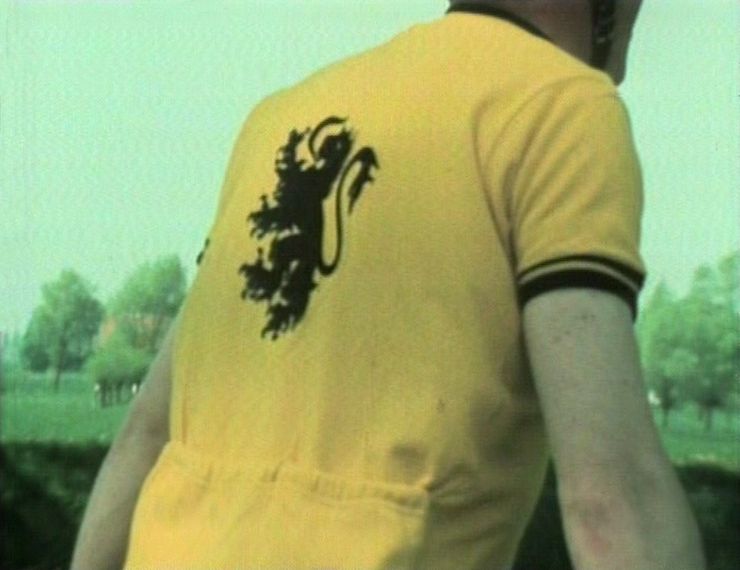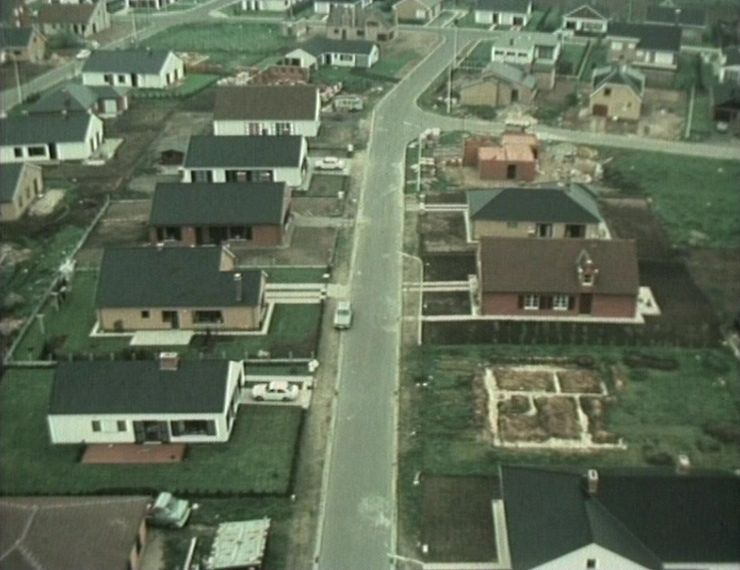Vlaanderen 77
1977 00:36:10 col. and b&wTogether with the author Leo Pleysier, Cornelis creates one of his most beautiful elegies of Flanders. They thumb through the landscape as if it were a book, seemingly of new, strange and unknown origins, a colourful patchwork veiling the remainders of smoking battlefields with its bizarre alluring and hidden charms and revealing fragments of a disaster area in its outer corners. Where does it come from and where does it go? The area is scoured like a mosaic of photo material, aerial shots and archive films, casually outlining its history, its fragmentation, acidification and fossilization. Flanders is pictured as a landscape with many names and colours, a bundle of faces and countenances, movements and gestures, voices and sounds, couching not merely resignation, but anxiety as well.
Content:
00’00" Titles (racing-cyclist with Flandria yellow jersey alternating with pictures of Flemish paintings). 01’50" Aerial photographs of Stuivekenskerke, Hertsberge, Vinkt, Melden, Bassevelde, Sint-Gillis-Waas, Kastel, Kaprijke, Zoutleeuw, Lier, Antwerp, Lo, Sint-Laureins, Duisburg, with pictures of bombing superimposed. 03’45" Archive photographs of Flemish peasants. 04’25" Aerial views of the coastline, Verdronken Land van Saaftinge, the dunes at De Panne, Zwin, Kalmthout, Menen, alternating with models of Oostende (1690), leper (1701), Menen (1702), Nieuwpoort (1698) and Oudenaarde (1747). 13’45" Pictures of an auction sale at the town hall in Hoogstraten, alternating with maps showing the evolution of the Flemish countryside between the years 800 and 1000. 19’10" Poem by Guido Gezelle and views of the Flemish countryside, towns and villages, as seen from a moving car and by a man walking. 33’10" Views of Flemish towns and villages. Pictures of streets in Antwerp. 34’45" Archive photographs of Flemish peasants. 35’15" Credits. 36’10"
(Source: Jef Cornelis 1964 - 1990, Espace Art Contemporain : Maison de la culture et de la Communication de Saint-Etienne, 1991)


Directed by; text & scenario Cornelis, Jef
Assistance Molnar, Marta
Voice Vermandere, Willem
Voice Beukelaers, François
Voice Prinsen, Ugo
Text & scenario Pleysier, Leo
Editing Malfliet, Gust
Film-to-video transfer Moreels, Raf
Video editing Rotthiers, René
Video editing Meynendonckx, Frans
Video editing Smets, Danny
Sound recording Meeusen, Leo
Image van Riet, Arie
Slides Manguin, Guy
Image van Rooy, Guido
Produced by BRT (Dienst Wetenschappen)
Production Puttemans, Frans
With the collaboration of Gemeentekrediet
With the collaboration of Aero Survey
With the collaboration of Stadsarchief Turnhout
With the collaboration of Brandweer Kruishoutem
With the collaboration of The inhabitants of Hoogstraten
With the collaboration of Graphic design department BRT
With the collaboration of School van het Licht Vliegwezen (Brasschaat)
